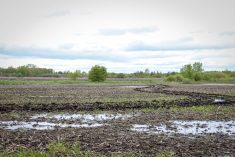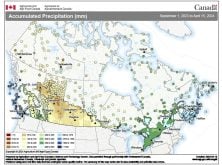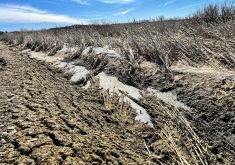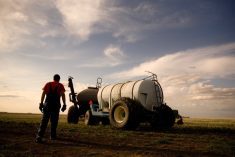Producers may be chomping at the bit to get fall nitrogen on, given conditions last year, but those same producers are taking a risk on nitrogen loss should the weather turn unfriendly.
John Heard, crop nutrition specialist with Manitoba Agriculture and Resource Development, warned producers to be wary of warm soils if they’re gambling on early application.
Why it matters: The memory of last fall, as well as the stress of shoving entire fertility plans into spring application, have producers antsy to get their fall nitrogen into the ground this year, but nitrification risk in still-warm soils may want to give producers pause.
Read Also

Local farm businesses, groups look forward to Manitoba Ag Days 2026
Most of agriculture is seemingly at Manitoba Ag Days each January: Manitoba agribusinesses and farm groups look forward to connecting with farmers at the 2026 show.
Last fall still looms large for producers. Rain started Sept. 20 last year in many regions, the vanguard of what would later be termed the “harvest from hell.” September rains were then compounded by an early October snowstorm and persistently wet conditions that left many acres unharvested and little fall fertility or field work complete.
Normally, the province estimates about 44 per cent of Manitoba’s nitrogen application is done in fall.
The result was a significantly compressed fertility application this spring, according to Barry Cooper, business-to-business operations manager for Heritage Co-op.
The company has a list of customers, “getting pretty eager about going as soon as they can,” he said.
“I think that last spring was a pretty big indicator to how compressed a season can be,” he added. “The concern always is how much can you do in the spring and also the infrastructure.”
The company builds its equipment fleet based on, “having a fall and a spring,” he said, “and once you press it all into the spring, if can get pretty tight.”
The company was able to meet demand this year due to some luck with rainfall, he noted, although there were still delays as companies and producers waited for product.
Many producers hope to avoid a similar fall shutout by applying early this year, Heard noted.
Cold soils, however, are critical to avoid nitrogen converting to nitrate and becoming vulnerable to loss should fall or spring turn wet, he warned.
Half of the nitrogen applied to 10 C soils will convert to nitrate within 19 days, according to research cited by Heard during a Sept. 23 webinar, while total nitrification is expected in 38 days. When soil temperatures drop to 1 C, however, nitrification slows to 190 days for a 50 per cent conversion.
As of Sept. 23, Manitoba’s Ag Weather network showed most soils between 12-15 C.
Heard urged producers to consider a nitrogen inhibitor until soils cool to 10 C or less.
“If one is applying fertilizer to warm soils, strongly consider the use of such products, particularly on poorer drained soils,” a late-September article by Heard advised. “Or one can delay banding (nitrogen) applications until mid- to late October, when soil temperatures have generally cooled to minimize conversion rates.”
Banding itself reduces conversion risk and doing so in fall allows co-banding with phosphorus and sulphur at rates that, if done in spring, would normally raise toxicity concerns, he noted.
Fall forecast
Cooper says Heritage Co-op expects a more normal fall this year.
As of Sept. 25, many Heritage Co-op customers were actually waiting for rain, he noted, as soil was hard and coming up in lumps.
“The good news of this is it’s Sept. 25; it’s not Oct. 25, so we have a little time,” he said.
Heritage Co-op has also seen no run on nitrogen inhibitors, Cooper noted, and customers are, “pretty much staying the course on what they’ve done in the past.”
















